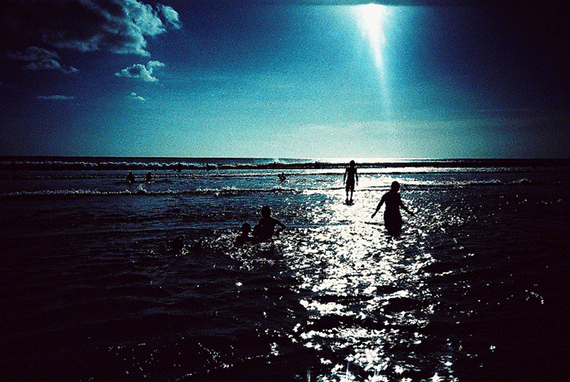Vignetting is a decrease in brightness of a photograph around its edges which are furthest from the centre of your photograph — Not only is the brightness of the photograph comprised in this darkened region but vignetting can have a negative effect on the accurate saturation of your timeless artistic work as well.

Photo by mi..chael.
Interestingly the term vignetting is commonly used by book publishers when describing a decorative design placed at the border of a book page, to emphasize the beginning of a chapter for example. But in photography, Vignetting does not usually have positive connotations associated to it, unless it is your specific endeavour to use this darkened outcome as a special or unusual effect around the edge of a particularly creative composition.
There are four ways in which vignetting can occur and to understand all of them, correctly, is complicated. A synopsis, of the types of vignetting that you are likely to experience at some stage of your photography career, follows.
The first type of vignetting can be purposefully achieved, using post processing tools, in a broad range of image manipulation software offerings such as Photoshop or CorelDraw. Of course the post processing vignetting result is chosen by the photographer, and definitely adds some degree of creativity to photographs, in particular to portrait photographs, but can make photographs look somewhat old fashioned. If this is not your intention steer well clear of these vignetting tools.

Photo by Elisa; ISO 400, f/3.5, 1/30-second exposure.
The second type of vignetting is natural vignetting, which occurs as a result of the angle at which the light coming into your camera, through the lens, impinges on your image sensor. This form of vignetting is particularly evident in low-end compact digital cameras. It should be known that some of the software which drives these cameras is coded in such a way as to reduce the effects of light falling off at the peripherals of your photograph. Zoom lenses which are above a certain focal length are far less prone to natural vignetting, but wide angle lenses suffer allot from accentuated vignetting.

Photo by Johnny Silvercloud; ISO 100, f/9.0, 1/100-second exposure.
The third type of vignetting occurs when there is a physical obstruction between the light rays trying to enter your camera and these bundles of light eventually striking your image sensor. This is most often caused through incorrect lens hoods, a cocktail of lens filters stacking up higher than a burger from Burger King, or some kinds of secondary lens such as extension tubes. In this case, it stands to reason that the smaller the aperture setting on the camera, the worse this mechanical vignetting will become. Stepping the aperture down will help to rid your photos of this very undesirable effect.

Photo by Rodriguez; ISO 80, f/8.0, 1/125-second exposure.
The fourth type of vignetting is often a result of the actual size of a modern day lens. Expensive lenses often have 20 individual elements or more! By the time the light has fought its way through the elements, it has lost some of its intensity, as the rear elements are slightly shielded from the incoming light by the lenses in front of them. This is where modern lenses with aperture values of 2.8 or less literally shine, as when stepping down to these wide open aperture values you can usually completely eliminate vignetting.

Photo by Jerry; ISO 1600, f/3.5, 1/70-second exposure.
About the Author:
Conrad Strehlau at (wedding4africa dot co dot za) is a photographer who creatively photographs for the very real reason that fewer things in this world are more pure than picking up a Camera, and capturing a moment of time for eternity.
Like This Article?
Don't Miss The Next One!
Join over 100,000 photographers of all experience levels who receive our free photography tips and articles to stay current:






Wonderful. Grateful to have learnt Vignetting.
As I collect antique dolls and our UDFC fbook group asked us to do a vignette photo of our dolls.
Your explanation of natural vignetting is not in accord with others I’ve seen. They claim the angle-sensitivity of sensors is a “pixel” vignetting. I would tend to give you the benefit of the doubt, but since you got it 100% wrong when describing the affect of aperture width, I am wondering which source to trust about natural vignetting
What about vignetting from mechanical effects when using a flash at speeds ~1/160?
“This is where modern lenses with aperture values of 2.8 or less literally shine, as when stepping down to these wide open aperture values you can usually completely eliminate vignetting.”
This didn’t make sense. Wide open apertures create the MOST vignetting. Stepping down FROM wide open eliminates vignetting. f/4 or f/5.6 usually completely eliminates vignetting from most professional f/2.8 or faster lenses.